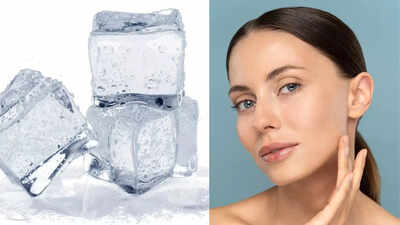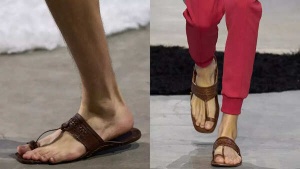Facial icing, or cryotherapy for the face, has surged in popularity on social media, touted for its potential therapeutic and aesthetic advantages. Proponents claim it can alleviate acne, reduce swollen eyes, and address various other skin concerns. While cold therapy has proven effective in treating injuries and alleviating pain, the scientific community remains unconvinced regarding its benefits for facial skin.

Despite the lack of definitive scientific backing, the belief in the efficacy of facial icing persists, solidifying its status as a prevalent beauty trend. Further research is necessary to validate its purported benefits for the skin.
According to experts, two primary methods are commonly recommended for performing ice facials:
Regardless of the chosen method, gently massage your face using slow, circular motions for approximately 1 to 2 minutes. Exercise caution to avoid prolonged direct contact between the ice and your skin, as extended exposure may lead to irritation.
This circular massage can be incorporated into your daily routine, targeting areas such as:
Prior to incorporating ice facials into your skincare regimen, it is advisable to consult a healthcare or skincare professional for personalized guidance. Consider the following tips:
It's also important to change the ice and wrapping frequently to prevent the spread of bacteria, and remember that icing should supplement, not replace, your existing skincare routine.
Several factors contribute to the growing popularity of ice facials:
Improper or prolonged facial icing can potentially lead to:
Individuals with pre-existing health conditions, such as diabetes or Raynaud's syndrome, should exercise caution or seek medical advice before attempting facial icing, as it may exacerbate existing sensitivities or nerve-related issues.
Facial icing offers several potential benefits, including:
While these benefits show promise, further research is necessary to ascertain the direct effects of facial icing on puffiness and acne.
Disclaimer: The information provided in this article is for general knowledge and informational purposes only, and does not constitute medical advice. It is essential to consult with a qualified healthcare professional or dermatologist for any health concerns or before making any decisions related to your health or treatment.
Newer articles
 Jannat Zubair Reveals "Biggest Regret" After "The Traitors" Elimination; Finale Looms
Jannat Zubair Reveals "Biggest Regret" After "The Traitors" Elimination; Finale Looms
 Beyond the Blood Test: 5 Subtle Signals of Prediabetes You Shouldn't Ignore
Beyond the Blood Test: 5 Subtle Signals of Prediabetes You Shouldn't Ignore
 Samsung Galaxy A35 5G and A55 5G: Official Pricing and Availability Announced
Samsung Galaxy A35 5G and A55 5G: Official Pricing and Availability Announced
 Najmul Hossain Resigns as Bangladesh Test Captain After Sri Lanka Defeat
Najmul Hossain Resigns as Bangladesh Test Captain After Sri Lanka Defeat
 Gambhir Defends India's Tailenders Despite Costly Batting Collapses in England Test Loss
Gambhir Defends India's Tailenders Despite Costly Batting Collapses in England Test Loss
 West Indies Coach Daren Sammy Fined, Receives Demerit Point for Umpire Criticism
West Indies Coach Daren Sammy Fined, Receives Demerit Point for Umpire Criticism
 FIFA Club World Cup 2025: Upsets, Messi Magic, and 2026 World Cup Concerns Emerge From Group Stage
FIFA Club World Cup 2025: Upsets, Messi Magic, and 2026 World Cup Concerns Emerge From Group Stage
 Wimbledon's All-White Dress Code: The History, Controversies, and Evolving Rules
Wimbledon's All-White Dress Code: The History, Controversies, and Evolving Rules
 Colon Cancer: Don't Ignore These 5 Early Warning Signs
Colon Cancer: Don't Ignore These 5 Early Warning Signs
 Prada Admits Kolhapuri Chappal Influence in New Sandal Design After Criticism
Prada Admits Kolhapuri Chappal Influence in New Sandal Design After Criticism